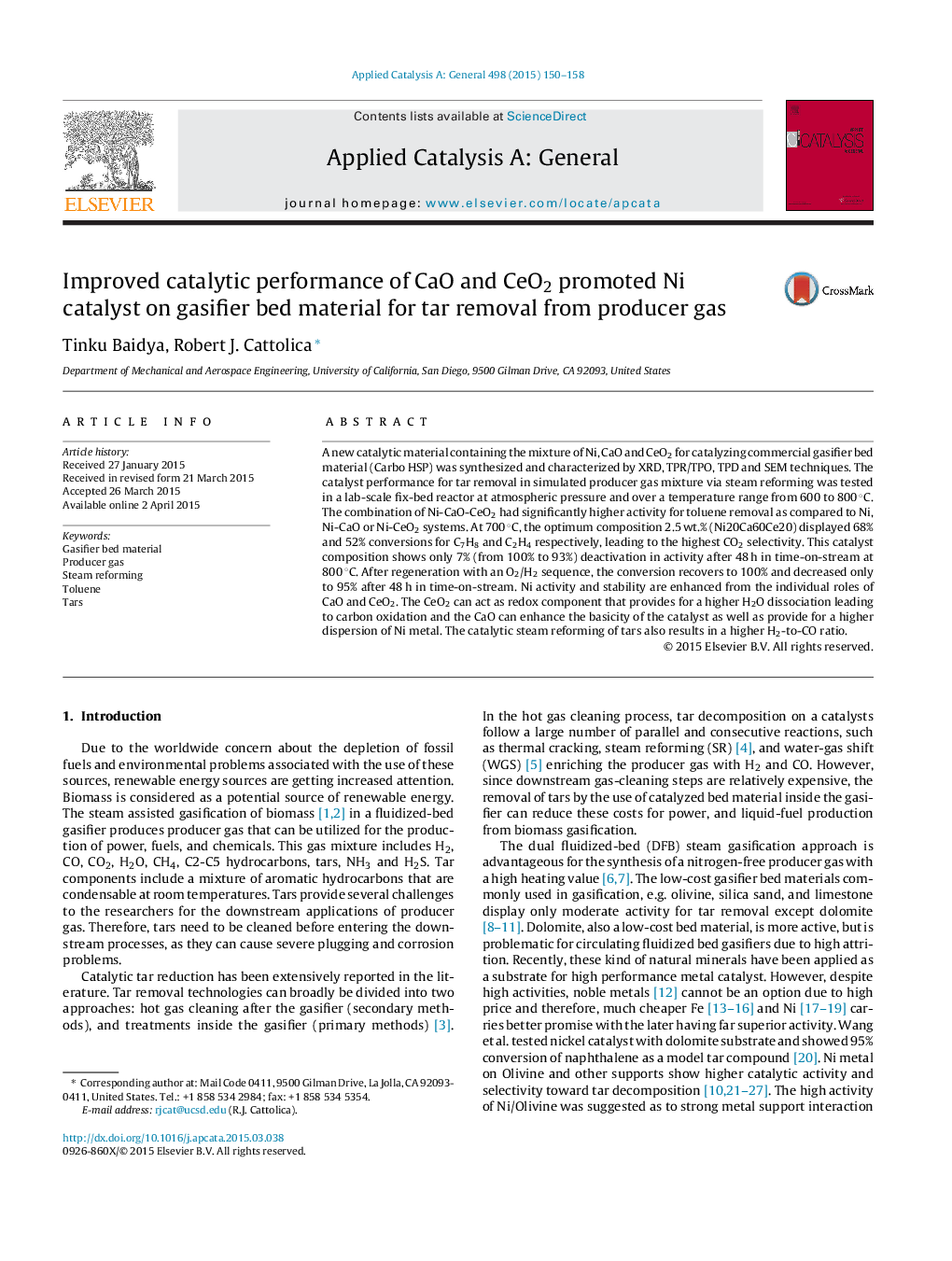| Article ID | Journal | Published Year | Pages | File Type |
|---|---|---|---|---|
| 39127 | Applied Catalysis A: General | 2015 | 9 Pages |
•NiO have strong interaction with both CaO and CeO2 in Ni-CaO-CeO2 catalysts.•Synergy between CaO and CeO2 promoters enhances tar removal activity of Ni than either CaO or CeO2.•The highest coke resistance was observed in 2.5%(Ni20Ca60Ce20) composition.•Higher basicity at higher CaO loading in Ni-CaO-CeO2 promotes less coke formation.
A new catalytic material containing the mixture of Ni, CaO and CeO2 for catalyzing commercial gasifier bed material (Carbo HSP) was synthesized and characterized by XRD, TPR/TPO, TPD and SEM techniques. The catalyst performance for tar removal in simulated producer gas mixture via steam reforming was tested in a lab-scale fix-bed reactor at atmospheric pressure and over a temperature range from 600 to 800 °C. The combination of Ni-CaO-CeO2 had significantly higher activity for toluene removal as compared to Ni, Ni-CaO or Ni-CeO2 systems. At 700 °C, the optimum composition 2.5 wt.% (Ni20Ca60Ce20) displayed 68% and 52% conversions for C7H8 and C2H4 respectively, leading to the highest CO2 selectivity. This catalyst composition shows only 7% (from 100% to 93%) deactivation in activity after 48 h in time-on-stream at 800 °C. After regeneration with an O2/H2 sequence, the conversion recovers to 100% and decreased only to 95% after 48 h in time-on-stream. Ni activity and stability are enhanced from the individual roles of CaO and CeO2. The CeO2 can act as redox component that provides for a higher H2O dissociation leading to carbon oxidation and the CaO can enhance the basicity of the catalyst as well as provide for a higher dispersion of Ni metal. The catalytic steam reforming of tars also results in a higher H2-to-CO ratio.
Graphical abstractFigure optionsDownload full-size imageDownload high-quality image (63 K)Download as PowerPoint slide
